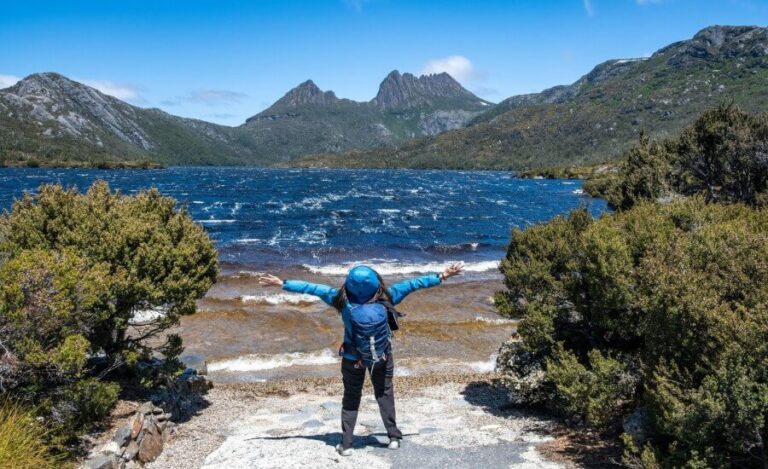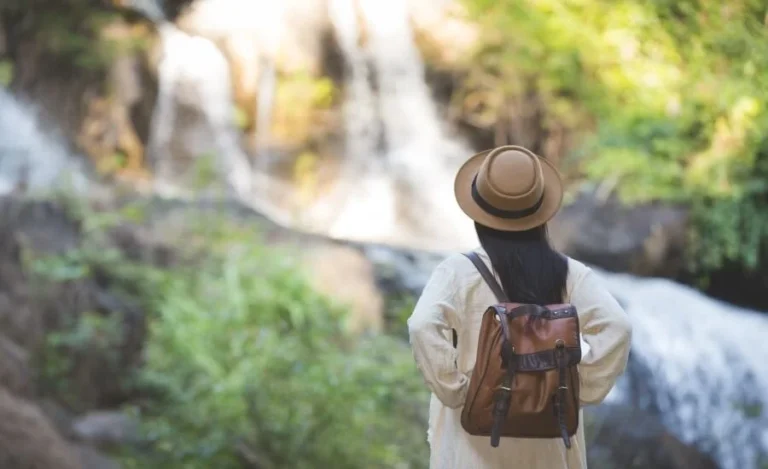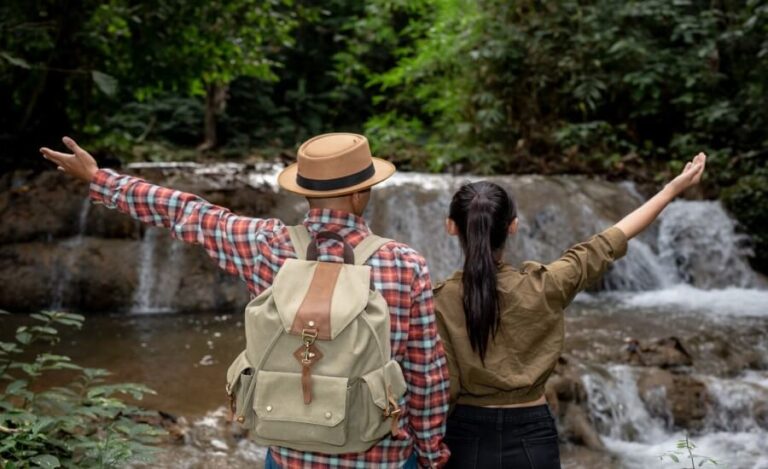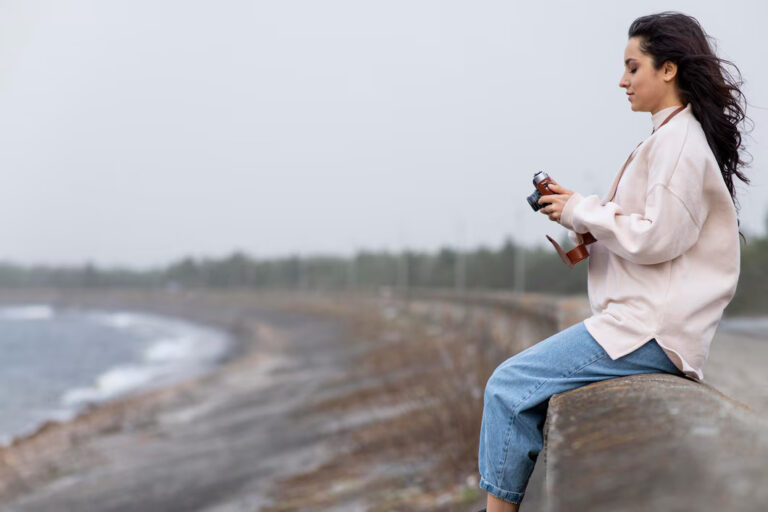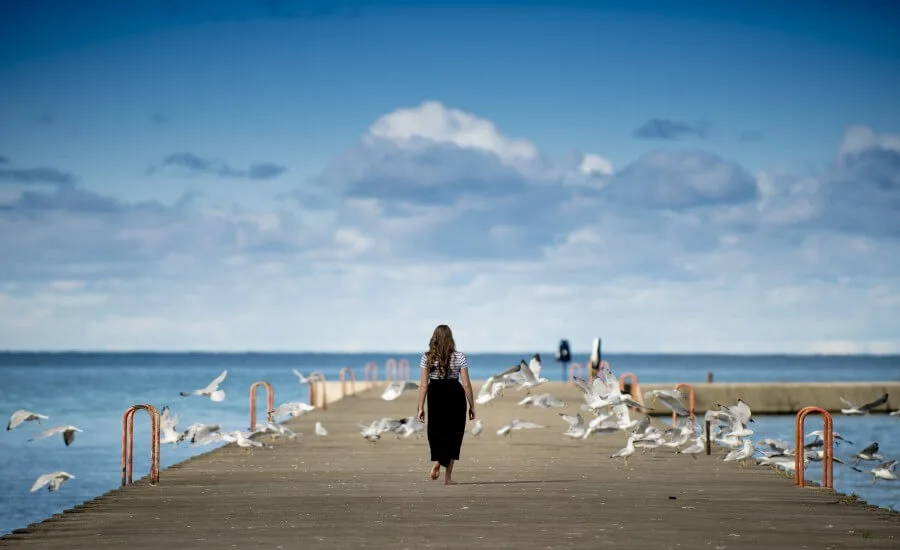
The ancient cobblestone streets of Venice glisten with morning rain as a local shopkeeper arranges fresh produce outside his store. You pause to watch, savoring the aroma of espresso drifting from a nearby café where Venetians gather for their morning ritual. No selfie sticks obstruct your view, no tour groups rush past with flags raised high, and no need to queue for an hour to enter St. Mark’s Basilica. This is Venice in February – a transformed city reclaimed by its residents and the few travelers wise enough to embrace the off-season.
In our hyperconnected world, we’ve been conditioned to believe that certain destinations have an optimal time to visit – a “peak season” when weather conditions are supposedly perfect and attractions fully operational. Social media feeds showcase these destinations at their most crowded, creating a collective illusion that these moments represent the authentic experience. We plan our trips accordingly, inadvertently joining the masses and experiencing places at their most commercialized and least authentic.
What if the true essence of a place reveals itself not during the carefully curated peak season, but in the quieter moments when a destination breathes its own rhythm? When locals reclaim their streets, when natural landscapes transform with seasonal changes, and when cultural experiences unfold not for tourists but for the community itself?
In this guide, you’ll discover how traveling during off-season periods offers not just significant cost savings but a more profound, connected travel experience that peak-season visitors rarely encounter. You’ll learn how disconnecting from both the tourist crowds and your digital devices creates space for genuine cultural immersion, unexpected discoveries, and the mindful presence that makes travel truly transformative. From Mediterranean summers without the crowds to tropical destinations during “green seasons,” these off-peak journeys deliver authentic experiences that no Instagram feed can capture.
Understanding Peak vs. Off-season: Beyond Weather Forecasts

Before exploring specific destinations, it’s important to understand what truly defines peak and off-seasons and why conventional wisdom about “best times to visit” often misses the deeper travel experience.
The Creation of Peak Seasons
Peak tourist seasons typically develop from a combination of factors:
Climate Expectations
-
Western travel preferences have historically favored mild, sunny weather – creating summer high seasons in temperate regions and dry-season peaks in tropical areas. This weather-centric approach often reflects colonial perspectives rather than local understandings of seasonal beauty.
-
Modern travelers increasingly recognize that “perfect weather” is subjective. Rain transforms landscapes, fog creates mystery, snow recasts familiar scenes into winter wonderlands, and cloudy days offer comfortable exploration without heat exhaustion or harsh photography lighting.
School Calendars and Work Schedules
-
Educational calendars, particularly in North America and Europe, fundamentally shape global tourism patterns. Summer breaks, winter holidays, and spring recesses create predictable tourism waves that have little to do with destination conditions and everything to do with institutional schedules.
-
These arbitrary patterns drive price increases, overcrowding, and the “touristification” of experiences during these periods. Traveling outside these collective vacation windows immediately places you in a different experience category.
Social Media Influence
-
The relatively new phenomenon of “Instagram tourism” has intensified peak seasons by creating artificial demand for specific photogenic moments – cherry blossoms in Japan, lavender fields in Provence, fall foliage in New England. These brief, photogenic windows become overwhelmed as travelers seek to capture the same images they’ve seen online.
-
Off-season travelers experience these destinations in different but equally compelling iterations – winter snow outlining temple architecture, Provençal markets filled with seasonal harvest, or New England coastal communities during their authentic working season.
Redefining “Ideal Conditions”
The concept of ideal travel conditions deserves reconsideration, particularly in an era of climate change and overtourism. Consider these alternative perspectives:
-
Weather as Experience, Not Backdrop: Rain in Seattle creates the cozy café culture the city is famous for. Fog in San Francisco defines its mystical character. Monsoon transforms India’s landscapes with vibrant life. These weather patterns aren’t impediments but essential elements of place experience.
-
Crowds as Cultural Indicator: Overwhelming tourism fundamentally alters the experience of place. Venice during peak cruise ship season bears little resemblance to the living city Venetians experience. Off-season travel often reveals the authentic cultural rhythms that define a place for those who actually live there.
-
Seasonal Change as Narrative: Places tell different stories throughout their seasonal cycles. Experiencing a destination across its transformations reveals a deeper understanding than the single, postcard-perfect moment most tourists witness.
Key Points:
- Peak seasons often reflect colonial weather preferences rather than authentic local experiences
- Institutional calendars create artificial demand periods unrelated to destination conditions
- Social media has intensified demand for specific photogenic moments
- Weather variations offer different but equally valuable experiences
- Authentic cultural rhythms often reveal themselves outside tourist high seasons
Top 10 Off-Season Destinations for the Unplugged Traveler

1. Mediterranean Europe: Winter Revelations
The Mediterranean coastline – from Spanish Costa Brava through the French Riviera, Italian Riviera, and Greek Islands – transforms completely during winter months (November through March). While summer brings oppressive heat, astronomical prices, and beaches packed with tourists, winter reveals the authentic soul of these regions.
Coastal communities return to their traditional rhythms as fishing boats that spent summer shuttling tourists return to their original purpose. Morning fish markets bustle with locals, restaurants serve regional specialties rather than internationalized tourist menus, and cultural events happen for community rather than visitor consumption.
Winter in these regions rarely means extreme cold – daytime temperatures typically range from 50-65°F (10-18°C), perfect for exploration without summer’s heat exhaustion. Occasional rain showers create atmospheric moments for café lingering, museum visits, and authentic connection with locals who suddenly have time for genuine conversations.
What makes these destinations perfect for unplugged travel is the dramatic shift in pace. Without massive tourist crowds, Mediterranean winters encourage slow travel, extended observation, and present-moment awareness. Cafés become places to watch community life unfold rather than quickly refuel between attractions. Historical sites offer contemplative exploration impossible when navigating summer crowds.
Accommodations that command $300+ nightly during summer often reduce rates by 60-70% in winter, while offering upgraded rooms and personalized service impossible during peak months. Many boutique properties in historic buildings offer winter-specific amenities like fireplaces and tea services that enhance the cozy seasonal experience.
Budget Breakdown:
- Accommodation: $50-100 per night (vs. $200-400 in summer)
- Meals: $20-40 per day (lower prices plus locals-only specials)
- Attractions: Many museums and sites offer winter discounts of 30-50%
- Transportation: Winter airfares to Mediterranean destinations typically cost 40-60% less than summer peak
- Total savings: Approximately 50-60% compared to peak season
Unplugged Traveler Testimony: “In Barcelona during February, I found myself alone in Park Güell at sunset – a place usually swarming with hundreds of tourists. Without the pressure to take perfect photos or move quickly for others waiting, I spent nearly an hour watching the changing light transform Gaudí’s mosaics. It became a meditative experience I still reflect on years later.” – Rachel, 39
2. Japan: The Quiet Season of Winter
While cherry blossom season (late March to early April) and fall foliage (November) draw massive crowds to Japan, the winter months (December through February) offer a profoundly different experience of Japanese culture and landscapes for travelers willing to embrace seasonal variation.
Winter transforms Japan’s iconic sites with dusting of snow that creates striking visual contrasts – red temple gates against white landscapes, steam rising from natural hot springs surrounded by snow-covered forests, and ancient gardens transformed into minimalist masterpieces of negative space.
Beyond the visual transformation, winter reveals cultural dimensions tourists rarely witness. Natural hot springs (onsen) transition from tourist attractions to essential community gathering places. Traditional events like fire festivals illuminate the cultural significance of seasonal transitions, while regional winter cuisine showcases preservation techniques and warming dishes central to Japanese culinary traditions.
What makes winter Japan ideal for unplugged travel is its natural encouragement of mindfulness. Snow muffles urban noise, creating contemplative environments even in cities. Traditional ryokan accommodations with heated kotatsu tables invite hours of tea drinking and conversation rather than digital distraction. Shorter winter days align perfectly with Japan’s emphasis on bath culture and early dinners.
The financial advantages prove significant – international flights cost 30-40% less than during cherry blossom season, while luxury ryokan that require booking a year in advance during peak seasons offer same-week availability at dramatically reduced rates.
Key Points:
- Winter illuminates traditional Japanese relationships with seasonality
- Snow transforms iconic sites into striking monochromatic compositions
- Onsen culture reveals its authentic community role during colder months
- Accommodation savings of 40-50% compared to peak seasons
- Absence of crowds creates space for mindful presence at major sites
3. Caribbean: The Misunderstood Green Season

The Caribbean’s “off-season” (roughly May through November) challenges conventional weather-based travel planning. While technically hurricane season, the actual likelihood of storm disruption remains statistically low, particularly in the southern Caribbean (Aruba, Bonaire, Curaçao, and Trinidad). What travelers instead discover is the “green season” – a period of brief, refreshing afternoon showers that transform islands into lush paradises.
This seasonal transformation reveals Caribbean ecosystems at their most vibrant – rainforests bursting with life, seasonal fruits unavailable during dry months, and wildlife more active and visible. Morning hours typically offer sunshine perfect for beach activities, while afternoon showers create natural rhythms for siesta, reading, or spa experiences.
Beyond natural beauty, off-season Caribbean reveals authentic island culture obscured during peak tourist months. Local festivals celebrate harvests and historical events significant to island communities rather than performing for tourist expectations. Restaurants serve regional specialties using seasonal ingredients rather than importing tourist-expected options.
What makes this period ideal for unplugged travel is the natural alignment with island rhythms. Without the pressure to maximize every minute of sunshine, travelers adapt to weather patterns that have shaped Caribbean life for centuries – productive mornings, relaxed afternoons, and vibrant evenings. These natural breaks create perfect opportunities to disconnect from devices and connect with local communities.
The financial advantages prove remarkable – luxury resorts offer rooms at 50-70% below peak rates, often including complimentary upgrades and amenities to attract off-season travelers. Airlines and cruise lines provide significant discounts, while local tour operators offer personalized experiences impossible during crowded winter months.
Budget Breakdown:
- Luxury accommodations: $150-250 per night (vs. $400-800 in peak season)
- Private tours: Often 30-40% below peak rates with more personalized attention
- Flights: Caribbean destinations show some of the most dramatic seasonal price variations, with savings of 40-60%
- Total savings: Approximately 50-65% compared to peak season
Unplugged Traveler Testimony: “I spent two weeks in St. Lucia during October – supposedly ‘hurricane season.’ It rained for about an hour each afternoon, creating the perfect excuse for napping or reading. The mornings and evenings were gorgeous, the beaches nearly empty, and my hotel upgraded me to an ocean-front suite at no extra cost. With fewer tourists around, I formed genuine friendships with local restaurant owners who invited me to family meals. It was a completely different experience than my previous winter visit.” – Michael, 45
4. Southeast Asia: Embracing the Monsoon
Southeast Asia’s monsoon season (typically May through October, varying by specific region) has been traditionally avoided by Western tourists seeking guaranteed sunshine. This misconception creates an extraordinary opportunity for off-season travelers to experience the region’s most dramatic natural transformations and authentic cultural rhythms.
Contrary to popular imagination, monsoon rarely means constant downpours. Typical patterns involve short, intense afternoon showers followed by cleared skies and cooled temperatures. These patterns create perfect natural frameworks for morning exploration, afternoon rest, and evening activities – the same rhythms local communities have followed for centuries.
The monsoon brings forests and rice terraces to vibrant life, waterfalls reach spectacular volumes, and rivers provide essential transportation and commercial arteries. These seasonal variations reveal ecological dimensions impossible to witness during dry months when landscapes appear comparatively barren.
What makes monsoon season ideal for unplugged travel is how it naturally disrupts conventional tourist patterns. Without the pressure to follow rigid sightseeing schedules, travelers adapt to weather rhythms that have shaped Southeast Asian life for millennia. These natural breaks create perfect opportunities to engage in conversation, observation, and reflection impossible during packed tourist itineraries.
Accommodations that command premium prices during high season become remarkably affordable, with luxury properties often available at 50-70% discounts. Beyond cost savings, the dramatically reduced tourist numbers mean more authentic interactions with local communities and more contemplative experiences at major sites.
Key Points:
- Monsoon patterns typically create predictable daily rhythms rather than constant rain
- Landscapes transform with dramatic greenery and water features
- Cultural activities reflect authentic seasonal patterns rather than tourist expectations
- Accommodations available at 50-70% below peak rates
- Major sites offer contemplative experiences impossible during crowded dry seasons
5. Alpine Europe: Summer Beyond Skiing

The Alpine regions of Switzerland, Austria, northern Italy, and southern Germany have become so associated with winter sports that many travelers overlook their remarkable summer transformation (May through September). When snow melts, these mountains reveal extraordinary landscapes of wildflower meadows, crystal lakes, and vibrant mountain cultures operating at their most authentic rhythm.
Summer in the Alps offers hiking across meadows carpeted with edelweiss and alpine roses, swimming in lakes the color of polished turquoise, and discovering working farms producing artisanal cheeses and meats. Village festivals celebrate agricultural traditions with music, dance, and culinary specialties unavailable during ski season.
The infrastructure developed for winter tourism – cable cars, mountain huts, well-marked trails – remains operational but without winter crowds, creating ideal conditions for accessible mountain experiences. Many ski resorts transform into mountain biking centers with trails for all skill levels, while thermal spas offer outdoor pools with panoramic mountain views.
What makes summer Alps ideal for unplugged travel is the natural immersion in sensory experiences – the sound of cowbells echoing across valleys, the scent of wildflowers and fresh hay, the taste of just-produced mountain cheeses. These environments naturally encourage digital disconnection as travelers engage fully with surrounding natural beauty.
Financially, summer offers remarkable value in regions otherwise known for premium pricing. Ski chalets and luxury hotels reduce rates by 40-60%, while offering larger rooms and enhanced service impossible during the winter rush. Many properties include regional transportation passes and mountain lift access in summer packages, creating exceptional value.
Budget Breakdown:
- Luxury alpine accommodations: $120-200 per night (vs. $300-500 in ski season)
- Regional transportation passes: Often included with accommodations in summer
- Mountain activities: Many municipalities offer summer activity cards providing free lift access
- Total savings: Approximately 40-50% compared to winter peak
Unplugged Traveler Testimony: “I booked a week in Zermatt during July, staying at a chalet that would have been completely unaffordable during ski season. Instead of crowds, I found meadows of wildflowers and crystal-clear lakes. One afternoon, I hiked to a mountain restaurant where a family was making cheese using methods unchanged for centuries. They invited me to join the process, an experience that would never happen during high season when they’re too busy serving skiers. Without my phone to distract me, I spent hours learning techniques passed through generations.” – Thomas, 34
6. Coastal New England: Autumn Beyond the Foliage

While New England’s fall foliage season (late September through mid-October) draws massive crowds to inland areas, the weeks immediately following offer an extraordinary opportunity to experience coastal New England at its most authentic. This “secret season” (late October through November) reveals working waterfronts, maritime traditions, and coastal communities transitioning to winter rhythms.
Fall storms create dramatic oceanscapes as Atlantic waves crash against rocky shorelines, lighthouses stand sentinel against moody skies, and coastal trails offer wind-swept solitude. This atmospheric transformation provides photographers with moody seascapes impossible during summer’s harsh light and crowded beaches.
Beyond natural beauty, this period reveals the authentic working character of coastal communities. Fishing fleets no longer sharing harbors with pleasure craft engage in seasonal harvests, processing facilities operate at full capacity, and maritime traditions unfold in their genuine context rather than as tourist demonstrations.
What makes this period ideal for unplugged travel is the natural contemplative atmosphere. Beaches that accommodate thousands during summer become personal meditation spaces. Historic coastal towns empty of tourist crowds reveal their architectural details and community rhythms. Evening fog rolling in creates perfect conditions for listening to lighthouse foghorns and reflecting on maritime histories.
The financial advantages prove significant – oceanfront accommodations that command premium summer rates offer dramatic discounts (50-70%), often upgrading guests to premium rooms with fireplaces and ocean views. Restaurants transition from tourist-focused menus to local specialties featuring seasonal seafood harvests, typically at lower prices with more attentive service.
Key Points:
- Dramatic coastal atmospherics create contemplative environments
- Working waterfronts reveal authentic maritime traditions
- Historic coastal communities return to local rhythms
- Accommodation savings of 50-70% compared to summer
- Seasonal seafood specialties showcase authentic regional cuisine
7. Morocco: Winter in North Africa
Morocco’s traditional high season (March-May and September-November) focuses on moderate temperatures perfect for desert excursions and city exploration. Yet winter (December-February) offers extraordinary cultural dimensions that peak-season visitors miss entirely, particularly in coastal and mountain regions.
Winter transforms Morocco’s diverse landscapes – the Atlas Mountains receive snow creating spectacular contrasts with traditional Berber villages, coastal regions enjoy mild temperatures (60-70°F/15-21°C) perfect for exploration, and even desert regions offer comfortable daytime temperatures for activities impossible during summer heat.
Beyond landscape transformation, winter reveals cultural dimensions tourists rarely witness. Seasonal foods appear in markets and homes – tangia slow-cooked in hammam ashes, seasonal tagines featuring preserved lemons and olives, and hearty harira soups that gather families. Traditional celebrations like Yennayer (Berber New Year) showcase cultural traditions absent during tourist seasons.
What makes winter Morocco ideal for unplugged travel is the natural shift toward interior spaces – traditional hammams become community gathering places rather than tourist experiences, cafés fill with locals engaged in conversation rather than visitor-watching, and riads center around fireplaces where travelers can engage with hosts without digital distractions.
The financial benefits prove substantial – international flights cost 30-40% less than during peak seasons, while luxury riads that command premium prices offer significant discounts and upgrades. Many properties include extras impossible during busy periods – hammam services, cooking lessons, and guided neighborhood walks with owners rather than contracted guides.
Budget Breakdown:
- Luxury riad accommodations: $70-120 per night (vs. $150-300 in peak season)
- Private guided experiences: 30-40% below peak rates with more personalized attention
- Flights: 30-40% savings compared to peak periods
- Total savings: Approximately 40-50% compared to peak season
Unplugged Traveler Testimony: “During January in Essaouira, I stayed in a riad that would have cost triple during high season. When afternoon rain appeared, my host invited me to the kitchen where three generations of women were making pastries. Without my phone to distract me, I spent hours learning family recipes passed through generations. That evening, we shared the pastries around the fire while they taught me traditional songs. It was the most authentic connection I’ve ever experienced while traveling.” – Sophia, 41
8. Australia: The Misunderstood Wet Season North
Northern Australia’s “wet season” (November through April) has been traditionally avoided by tourists seeking guaranteed sunshine. This misconception creates an extraordinary opportunity for off-season travelers to experience tropical Australia’s most dramatic landscapes and ecological transformations at a fraction of dry season costs.
The wet season brings dramatic rejuvenation to regions like Kakadu National Park, the Kimberley, and Tropical North Queensland. Waterfalls reach spectacular volumes, billabongs fill creating ideal wildlife viewing, and landscapes transform from parched earth to vibrant green expanses. These conditions reveal ecological dimensions impossible during the dry season when many water features disappear entirely.
Contrary to popular imagination, wet season rarely means constant downpours. Typical patterns involve intense afternoon thunderstorms – themselves spectacular natural phenomena – followed by cleared skies and cooling breezes. These patterns create perfect natural frameworks for morning exploration, afternoon rest, and evening activities.
What makes wet season ideal for unplugged travel is how natural conditions encourage mindful presence. Dramatic thunderstorms demand attention, creating perfect opportunities to observe natural phenomena without digital distractions. Wildlife becomes more concentrated around water sources, allowing extended observation of feeding and social behaviors.
Accommodations that command premium prices during the dry season become remarkably affordable, with luxury lodges often available at 50-70% discounts. Beyond cost savings, the dramatically reduced tourist numbers mean more personalized experiences with guides who have time for detailed explanations and customized experiences impossible during peak months.
Key Points:
- Landscapes transform with dramatic water features and vibrant greenery
- Wildlife concentrates around water sources for easier viewing
- Dramatic weather events create spectacular photography opportunities
- Accommodations available at 50-70% below peak rates
- Guided experiences offer deeper knowledge-sharing impossible during crowded periods
9. Scandinavia: Summer of the Midnight Sun
While winter has become increasingly popular for Northern Lights tourism, Scandinavian summer (June through August) offers a different but equally magical natural phenomenon – the midnight sun – alongside vibrant cultural dimensions that winter visitors miss entirely.
Summer transforms Nordic landscapes dramatically – frozen lakes become swimming destinations, snow-covered forests reveal networks of hiking trails through carpets of berries and wildflowers, and coastal regions offer island-hopping adventures through archipelagos inaccessible during winter months.
Beyond landscape transformation, summer reveals Nordic cultural dimensions centered around light celebration. Midsummer festivals showcase traditional music, dance, and culinary traditions dating to pre-Christian times. Outdoor dining culture emerges, with restaurants and cafés expanding into parks and waterfronts for meals under the never-setting sun.
What makes Nordic summer ideal for unplugged travel is how the midnight sun naturally disrupts conventional time patterns. With no darkness to signal day’s end, travelers naturally abandon rigid schedules in favor of spontaneous adventures, extended outdoor meals, and late-night conversations beside lakes reflecting pink-hued skies at 2 a.m.
While Scandinavian capitals remain relatively expensive year-round, summer offers significant savings in rural and coastal areas that focus primarily on winter tourism. Cabins near ski resorts become affordable summer retreats, while coastal properties offer dramatic discounts compared to their limited winter operations.
Budget Breakdown:
- Rural accommodations: $80-150 per night (vs. $150-300 during Northern Lights season)
- Transportation: Significant savings through seasonal passes for boats, trains and buses
- Activities: Many outdoor experiences (hiking, swimming, foraging) available without cost
- Total savings: Approximately 30-40% compared to winter Northern Lights peak
Unplugged Traveler Testimony: “I rented a lakeside cabin in Swedish Lapland during July – a place that would have been three times the price during Northern Lights season. Without darkness to mark time, I completely lost track of conventional schedules. One night, I took a midnight canoe paddle across a perfectly still lake reflecting pink skies. Without my phone or watch, I had no idea if it was 10 p.m. or 2 a.m., and it didn’t matter. That temporal disorientation created the most profound sense of presence I’ve ever experienced while traveling.” – Emma, 36
10. India: The Transformative Monsoon
India’s monsoon season (June through September) represents perhaps the most dramatic seasonal transformation on Earth – yet remains largely avoided by international tourists. This creates an extraordinary opportunity for travelers willing to embrace weather as experience rather than inconvenience.
Monsoon transforms India’s landscapes from parched earth to vibrant life – deserts bloom with unexpected flowers, dust-covered trees explode with green leaves, and ancient step-wells fill with water revealing architectural details invisible during dry months. These conditions showcase ecological dimensions central to Indian cultural and spiritual traditions.
Beyond physical transformation, monsoon reveals cultural dimensions rarely witnessed by foreign visitors. Temples host special ceremonies celebrating water’s arrival, classical music traditions include ragas specifically composed for monsoon moods, and culinary traditions feature seasonal ingredients and preparations developed for humid conditions.
What makes monsoon India ideal for unplugged travel is how it naturally slows movement and encourages contemplation. Intermittent rain creates perfect opportunities for extended temple visits, museum exploration, or conversations in chai shops – experiences often rushed during conventional itineraries. These weather-imposed pauses create natural moments for reflection impossible during packed tourist schedules.
The financial advantages prove remarkable – international flights cost 30-50% less than during peak season, while luxury hotels offer dramatic discounts, often upgrading guests to premium rooms with balconies perfect for watching rainfall. Many cultural sites reduce fees during monsoon months while offering more contemplative experiences without tourist crowds.
Key Points:
- Landscapes transform with dramatic greenery and filled water features
- Cultural and religious traditions specifically honor monsoon season
- Intermittent rain creates natural breaks for reflection and deeper observation
- Premium accommodations available at 40-60% below peak rates
- Major sites offer contemplative experiences impossible during crowded dry season
The Mindful Magic of Off-season: Psychological Benefits of Counter-Cyclical Travel

Beyond practical advantages of cost savings and crowd avoidance, off-season travel creates psychological conditions particularly conducive to mindfulness, presence, and deeper connection with place.
Expectation Liberation
Peak-season travel comes burdened with expectations. Social media and marketing create specific anticipation of how experiences “should” look and feel, often leading to disappointment when reality differs from these curated images.
Off-season travel liberates us from these preconceptions. Without a predetermined script of “perfect” experiences, travelers become open to the destination as it actually exists rather than as it’s been portrayed. This expectation freedom creates space for genuine discovery and appreciation of what is present rather than disappointment over what isn’t.
Research in travel psychology shows that expectation-free experiences generate higher satisfaction and stronger memory formation than heavily pre-imagined ones. By encountering places without rigid expectations, off-season travelers often report more transformative experiences than those who arrive with specific image-based goals.
Deeper Cultural Immersion
Tourism inevitably changes local behavior. During peak seasons, residents often adjust their patterns to accommodate or avoid visitors – creating artificial environments that bear little resemblance to authentic community rhythms.
Off-season travel reveals communities operating primarily for themselves rather than visitors. Markets serve local needs rather than tourist expectations, cultural events happen for community rather than commercial purposes, and public spaces function according to local traditions rather than visitor anticipation.
This authenticity creates opportunities for genuine cultural exchange impossible during periods when economic relationships dominate interactions between visitors and residents. Without tourist crowds creating separation, meaningful conversations and community inclusion become possible in ways peak-season visitors rarely experience.
Enhanced Observation Skills
Crowded environments fundamentally alter how we perceive place. Cognitive research demonstrates that human presence draws attention, making it difficult to notice environmental details when navigating through tourist crowds.
Off-season travel creates space for what psychologists call “soft fascination” – the gentle, undirected attention that allows subtle details to emerge into awareness. Without human crowds dominating perception, travelers notice architectural elements, natural features, and cultural subtleties otherwise overlooked.
This attentional space particularly benefits unplugged travelers who further eliminate digital distractions. The combination of physical crowd reduction and technological disconnection creates ideal conditions for the deep observation that transforms tourist experiences into meaningful place relationships.
Key Points:
- Freedom from expectations creates openness to authentic experiences
- Communities operate for themselves rather than visitors, revealing genuine cultural patterns
- Reduced crowds enable “soft fascination” and enhanced environmental awareness
- Combination of off-season timing and digital disconnection creates optimal conditions for mindful presence
- Research shows expectation-free experiences create stronger, more positive memories
Common Concerns & Solutions for Off-season Unplugged Travel

“What if the weather ruins my experience?”
Solution: Reframe weather as integral to experience rather than obstacle. Each weather pattern reveals different dimensions of place – rain showcases architectural details as water flows from gargoyles, fog creates mystery in landscapes, and cloudy skies provide ideal diffused light for photography.
Pack appropriate gear (quality rain protection, layering options) to remain comfortable in various conditions. Consider the Japanese concept of “mujō” – the profound beauty of impermanence – and how weather makes each travel moment truly unique and impossible to replicate.
“Will everything be closed during off-season?”
Solution: Research is essential, but closures often affect tourist-focused businesses rather than authentic local experiences. While beach clubs might close during Mediterranean winters, the family restaurants serving local cuisine remain open for residents year-round.
Many cultural sites offer more intimate experiences during off-seasons – museum curators have time for impromptu discussions, cathedral staff can explain architectural details without rush, and historic site guides provide deeper context impossible during peak crowds.
Use closure patterns to identify authentically local experiences. Businesses that remain open year-round typically serve residents rather than visitors, offering more genuine cultural experiences than seasonally operated tourist venues.
“I’m concerned about safety without tourist infrastructure.”
Solution: Off-season rarely means complete tourism shutdown – rather, reduced numbers and focus on independent travelers versus groups. Core infrastructure like transportation and emergency services typically maintain operations based on resident needs regardless of tourist fluctuations.
Research specific regional patterns, distinguishing between “reduced service” and “closure.” Many destinations maintain core services year-round with only frequency adjustments (fewer daily buses rather than no buses).
Consider that locals navigate these conditions successfully year-round. Observing and adopting their strategies – from appropriate clothing to activity timing – often reveals more authentic destination experiences.
“How will I navigate or get help without constant connectivity?”
Solution: Preparation mitigates most connectivity concerns. Before departure:
- Download offline maps for your destination
- Research transportation schedules and save PDFs
- Print or write physical copies of essential accommodation information
- Learn 15-20 basic phrases in the local language
Many travelers report that navigating analog-style creates more meaningful local interactions – asking directions leads to conversations, public transportation questions reveal local knowledge, and problem-solving without digital assistance creates confidence and memorable stories.
“I’m traveling for specific activities – will they be available?”
Solution: Research carefully, distinguishing between “impossible” versus “different.” While skiing requires snow and beach swimming requires safe water temperatures, most activities transform rather than disappear seasonally.
Often, activity modifications reveal more authentic experiences – cooking classes during Caribbean green season use different ingredients reflecting actual seasonal consumption patterns, hiking during Alpine summers reveals wildflowers and wildlife impossible to witness during ski season, and city exploration during shoulder seasons includes community events rather than tourist performances.
Consider embracing the unexpected – the activities you discover during off-season often prove more memorable than those initially planned.
Before You Go: Preparation Checklist for Off-Season Digital Detox

- Weather Research: Beyond averages, understand patterns – when rain typically occurs, how quickly conditions change, and temperature variations throughout the day.
- Appropriate Packing: Layer-friendly clothing, quality rain protection, and versatile footwear for various conditions.
- Physical Preparation: Print maps, accommodation details, and transportation schedules rather than relying on digital access.
- Expectation Adjustment: Research seasonal transformation specifically – what unique experiences become possible during this period?
- Seasonal Event Research: Identify community festivals, agricultural activities, or cultural events that occur specifically during your travel period.
- Alternative Activity Planning: Develop rainy-day options that enhance rather than merely compensate for weather conditions.
- Disconnection Strategy: Determine your technology boundaries – perhaps using devices only in accommodation rather than throughout the day.
- Communication Plan: Establish how and when you’ll check in with home, preparing contacts for your limited availability.
- Analog Documentation Tools: Pack journal, sketching supplies, or film camera for capturing experiences without digital devices.
- Mindfulness Preparation: Set intentions for your unplugged experience – what specifically do you hope to notice, learn, or experience with undivided attention?
Embracing Seasonal Authenticity: The True Spirit of Travel

The standardization of travel experiences represents perhaps the greatest loss in modern tourism. As destinations increasingly present identical experiences regardless of season – climate-controlled environments, seasonally inappropriate menus, and performances scheduled for visitor convenience rather than cultural significance – we lose the essential rhythms that define place authenticity.
Off-season travel, particularly when combined with digital disconnection, offers a radical alternative – experiencing destinations as they truly exist rather than as they’ve been packaged for mass consumption. By embracing seasonal changes, weather variations, and community rhythms, we access dimensions of place impossible during homogenized peak periods.
The financial benefits of off-season travel make experiences accessible that might otherwise exceed budget constraints. The luxury suite with panoramic views, the personalized cooking lesson with a renowned chef, the private guided tour of historical sites – these premium experiences become available at standard prices simply by adjusting travel timing.
Beyond material advantages, off-season provides the increasingly rare luxury of space – physical space without crowds, mental space without digital distraction, and temporal space without rigid itineraries. This expansiveness creates conditions for the deep observation, genuine connection and transformative reflection that define truly meaningful travel.
As you consider your next journey, challenge the conventional wisdom about “best times to visit” by asking a different question: When might this place reveal dimensions tourists rarely witness? The answer often lies precisely in those quiet seasons when a destination isn’t performing for visitors but simply being itself – authentic, ever-changing, and alive with possibilities beyond any Instagram feed or travel blog.
The most profound travel experiences rarely arrive through perfect conditions but through perfect presence – the capacity to fully witness whatever a place offers in its current season, weather, and rhythm. Off-season travel, embraced with openness and presence, creates ideal conditions for this deeper connection – not with the destination you imagined, but with the living place that exists beyond expectation.


